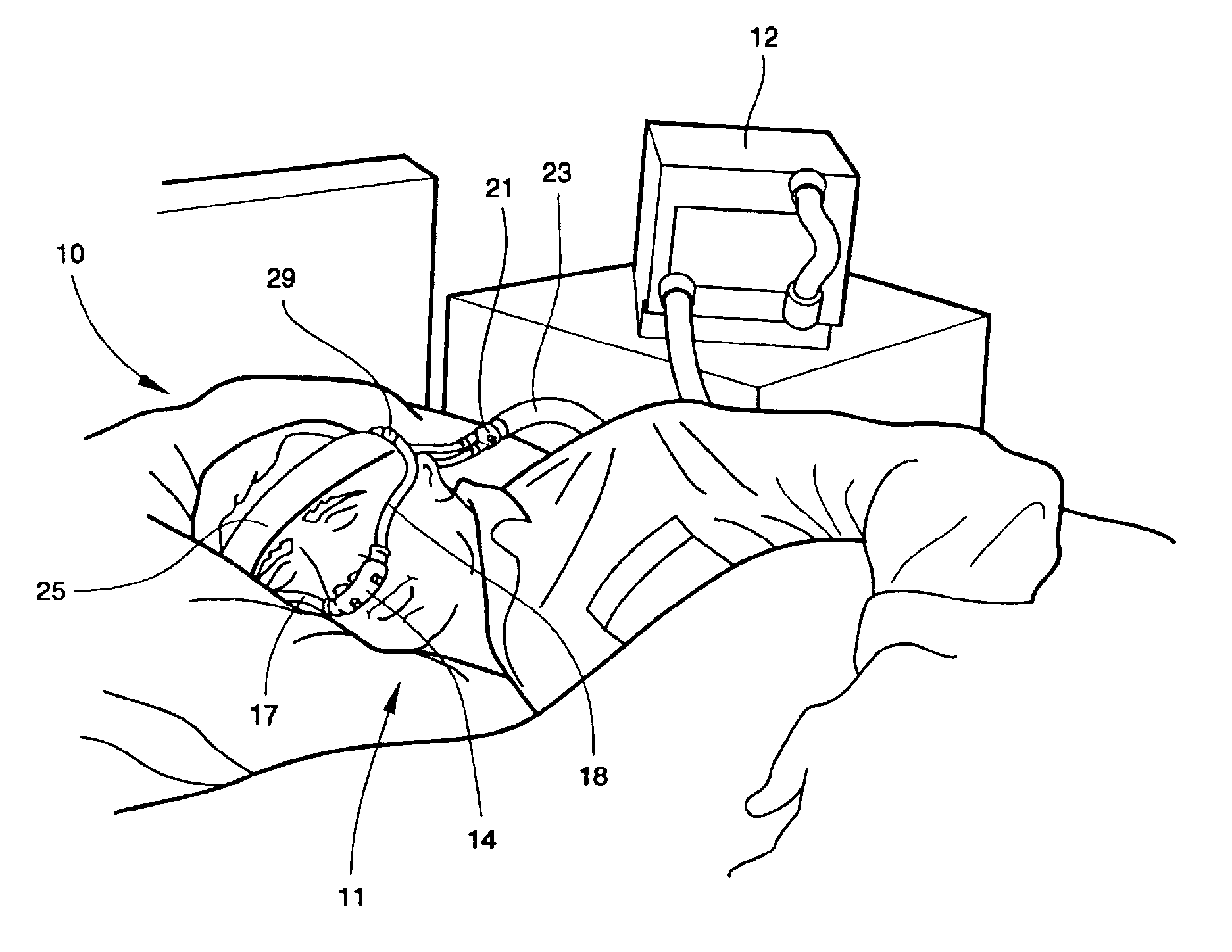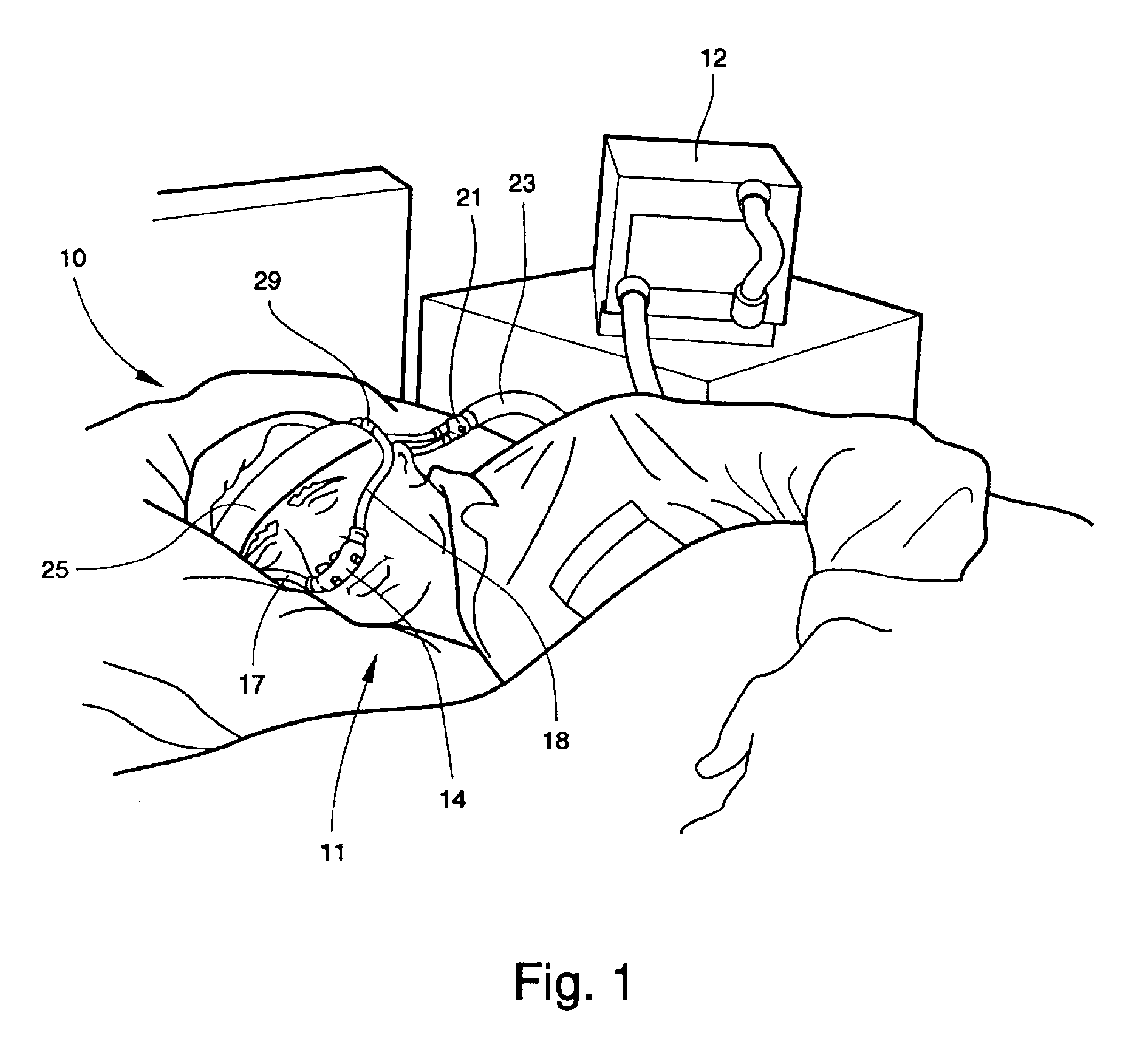Headwear for use by a sleep apnea patient
a sleep apnea patient and headwear technology, applied in the field of sleep apnea patients' headwear, can solve the problems of interruption of breathing during sleep, headaches and excessive daytime sleepiness in the early morning, and potentially life-threatening sleep apnea, and achieve the effect of convenient application and inexpensive manufacturing
- Summary
- Abstract
- Description
- Claims
- Application Information
AI Technical Summary
Benefits of technology
Problems solved by technology
Method used
Image
Examples
Embodiment Construction
[0035]Referring now specifically to the drawings, headwear for a sleep apnea patient according to the present invention is illustrated in FIG. 1, and shown generally at reference numeral 10. The headwear 10 is especially applicable for use with a nasal interface 11, such as that sold under the trademark NASAL-AIRE®. The nasal interface 11 connects to a positive airway pressure device 12. One example of a positive airway pressure device 12 is described in U.S. Pat. No. 6,105,575 issued to Respironics, Inc. of Pittsburgh, Pa. The complete disclosure of this patent is incorporated herein by reference.
[0036]As shown in FIGS. 1 and 2, the nasal interface 11 includes a hollow under-nose reservoir 14 formed of a soft, flexible silicone elastomer. The under-nose reservoir 14 extends across the upper lip of the patient, and has two molded nasal insert sleeves 15 and 16 for positioning in the nares of the nose. Flexible rubber airway tubes 17 and 18 connect to opposite ends of the under-nose ...
PUM
 Login to View More
Login to View More Abstract
Description
Claims
Application Information
 Login to View More
Login to View More - R&D
- Intellectual Property
- Life Sciences
- Materials
- Tech Scout
- Unparalleled Data Quality
- Higher Quality Content
- 60% Fewer Hallucinations
Browse by: Latest US Patents, China's latest patents, Technical Efficacy Thesaurus, Application Domain, Technology Topic, Popular Technical Reports.
© 2025 PatSnap. All rights reserved.Legal|Privacy policy|Modern Slavery Act Transparency Statement|Sitemap|About US| Contact US: help@patsnap.com



